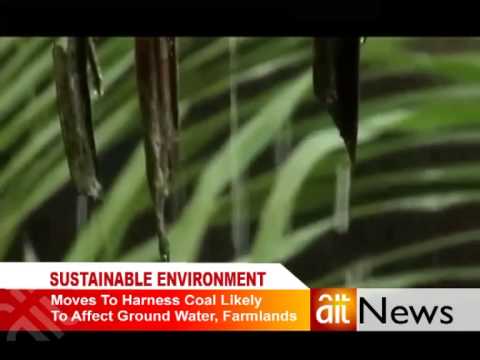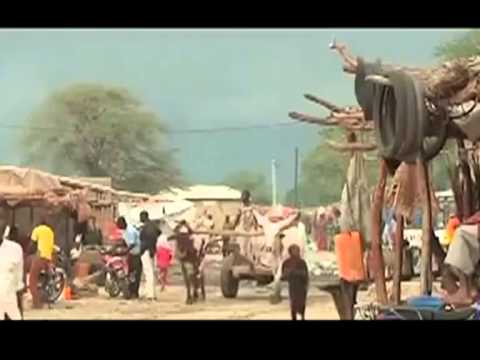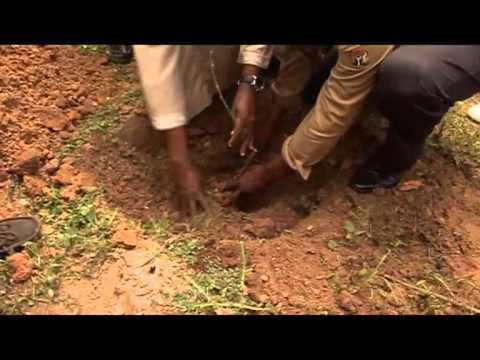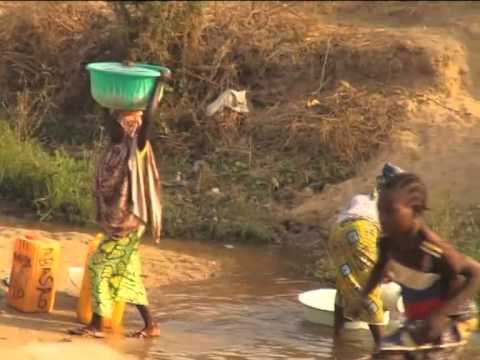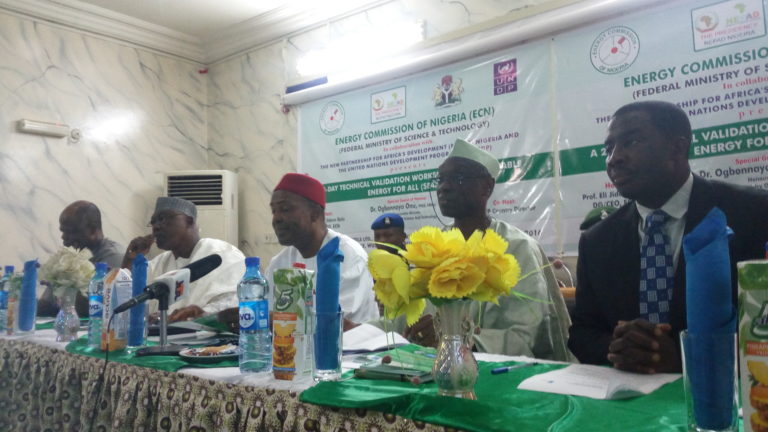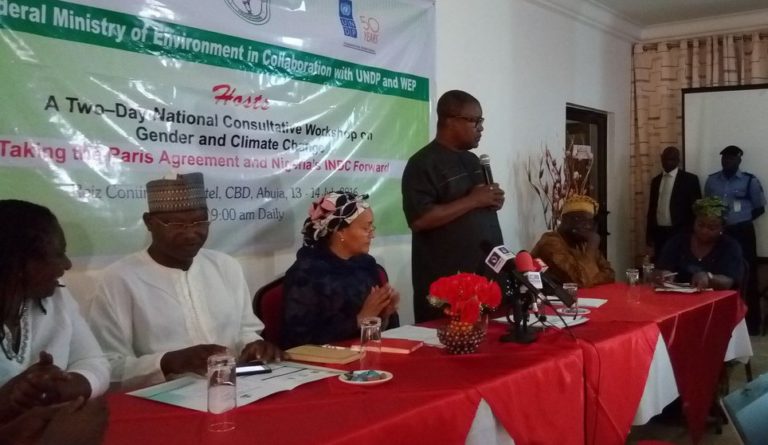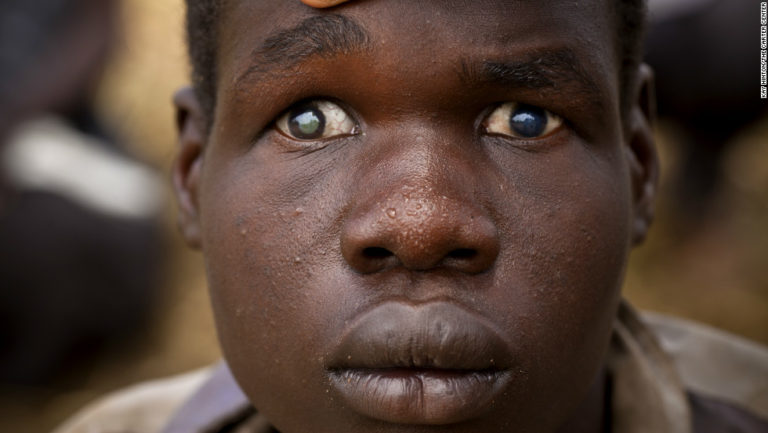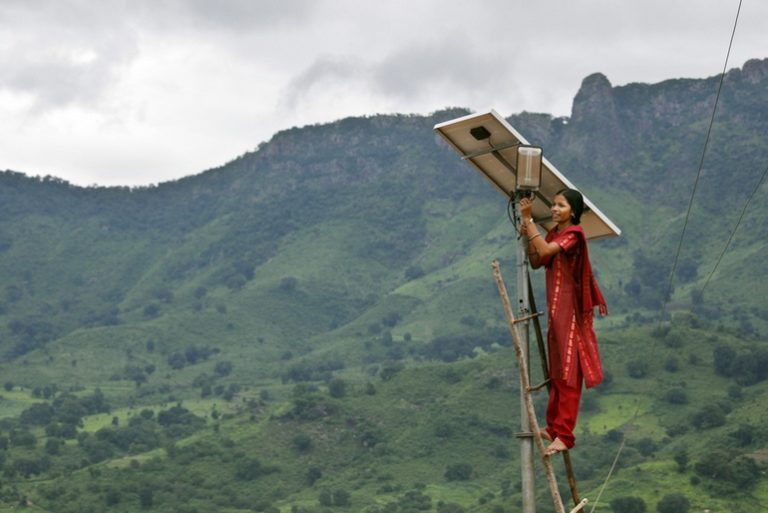Coal is likely to become a popular source of energy in Nigeria as the nation moves to intensify mining activities and boost production, contrary to global plans to transit to clean energy sources.
Video: Nigeria reclaims desert in 11 states
The Nigerian government has approved N10 billion to reclaim the desert along 11 front line states in the northern part of the country. Disregard the $10 billion mentioned in the narration in the report.
Video: Women and rural water access
Government initiative aimed at involving women in the protection of water facilities is likely to be frustrated, no thanks to socio-cultural factors wherein women are not to be seen in some communities in Nigeria.
How renewable energy will drive Vision 2020/20 – Govt
For Nigeria to be among the 20 largest economies in the world by 2020, an environmentally sustainable energy supply must be addressed.
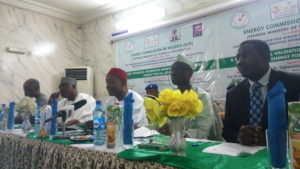
Minister of Science and Technology, Dr Ogbonnaya Onu, who made the disclosure last Thursday (14 July, 2016) in Abuja at the opening of the Validation Workshop the Sustainable Energy for All (SE4ALL) Action Agenda, added that the energy supply venture should likewise be secured, equitable and create employment opportunities.
According to him, this can only be achieved through the transformation of the nation’s economy from one based mainly on fossil fuel to a low carbon based around renewable energy and energy efficiency.
“The Nigerian government’s commitment to accelerate the development of renewable energy and energy efficiency in the country is well set out in the National Energy Policy, the Renewable Energy Master Plan (REMP) and the Vision 2020/20,” he said, adding that renewable energy reduces sole dependence on fossil fuels, improves security of energy supply, reduces greenhouse gas (GHG) emissions, creates environmental and social benefits; and delivers green jobs to the economy.
Apart from reviewing the draft SE4ALL Action Agenda, the objective of the two-day gathering was also to: domesticate the SE4ALL Initiative in the country, engage all stakeholders in the development of the SE4ALL Action Plan, and promote dialogue and discourse among policy makers on SE4ALL.
Stakeholders at the meeting included ministries, departments and agencies (MDAs), the media, civil society organisations and international donor and development partners. The forum was organised by the Energy Commission of Nigeria (ECN) in collaboration with The Partnership for Africa’s Development (NEPAD) Nigeria and the United Nations Development Programme (UNDP).
The minister congratulated the ECN and all stakeholders for drafting the Action Plan, while also thanking the UNDP and NEPAD leadership in the country for the support granted to uplift sustainable energy development.
His words: “My ministry will continue to play its role in ensuring that energy development, which is impacted more by science and technology development, is done in a sustainable manner. Renewable energy and energy efficiency best practices will continue to attract my ministry’s attention until it is developed into an economic sub-sector that contributes reasonably to the GDP.”
Tracing the genesis of the SE4ALL, Prof. Eli Jidere Bala, Director-General and CEO of the ECN, said the initiative was formally unveiled in September 2011 by the UN Secretary General with the view of bringing all sectors of the society to support the three interlinked objectives of ensuring universal access to modern energy services; doubling the share of renewable energy in the global energy mix; and doubling the global rate of improvement in energy efficiency, all by 2030. The initiative was launched a year later in Nigeria.
He said: “Consequently, in the discharge of its statutory responsibility for strategic planning and coordination of national energy policies in all its ramifications, ECN was supported by the UNDP to work with other stakeholders, including MDAs, in domesticating the UN initiative in the country.
“To this effect, sensitisation workshops on SE4ALL were held in 2012 and 2013. In 2013 also, a SE4All Rapid Assessment Gap & Analysis for Nigeria was carried out, and stakeholders met to validate the draft. The Rapid Assessment & Gap Analysis provides regional and international stakeholders with information on the current status of the energy access, renewable energy deployment and energy efficiency.”
According to him, the next step in the SE4ALL milestone is the preparation of country-specific Action Agenda across government MDAs to bridge the gaps earlier identified in line with international template.
The UNDP Country Director, Pa Lamin Beyai, emphasised that, once validated, the SE4ALL Action Plan would become a viable instrument to help coordinate strategies and activities to meet the objectives of the SE4ALL Initiative.
“We at the UNDP are indeed very optimistic that, with the quality of stakeholders invited for the workshop, we will have a quality and workable document that will not only help to meet the aspiration of many Nigerians, but also provide a framework for energising the national sensitisation, prioritisation and, most importantly, implementation of the Sustainable Development Goals (SDGs) for the people of Nigeria, and ensure that no one is left behind,” said Beyai, who was represented by Muyiwa Odele.
Nigeria engages Paris Agreement to drive gender, youth agenda
“I urge you to come out with a national work plan on gender and climate change that is implementable, achievable, smart and that would address the nation’s challenging problems in the short, medium and long term. We must also develop and implement specific plans to fill the gaps in adaptation, capacity building, education, access to safe, affordable, available and sustainable technologies, and decision-making schemes for women in rural contexts.”
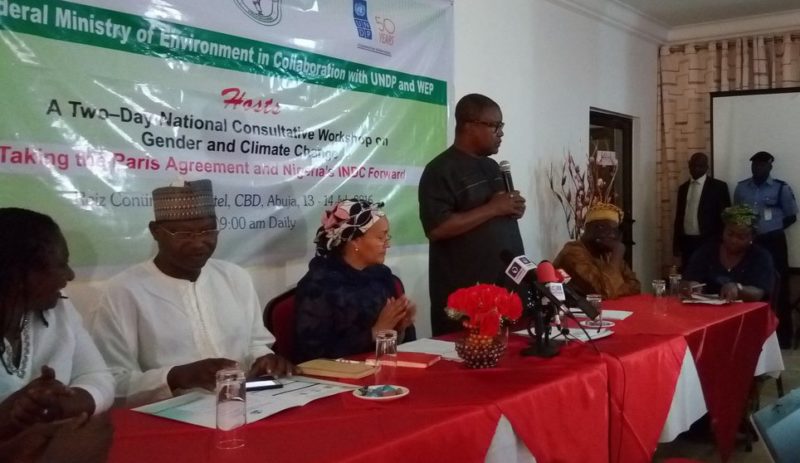
Those were the compelling words of Mrs Amina Mohammed, Nigeria’s Minister of Environment, last Wednesday (13 July, 2016) in Abuja while officially opening the two-day National Consultative Workshop on “Gender and climate change consultation: Taking the Paris Agreement and Nigeria’s INDC forward.”
The forum, along with the expected outcome, according to her, is an avenue by which gender takes the front stage in addressing climate action through the implementation of the Paris Agreement and the Nationally Determined Contributions (NDCs).
She acknowledged the fact that progress towards recognising the need to address gender equality in climate change initiatives has been gradual, adding however that, over the past eight years, more than 50 decisions of the United Nations Framework Convention on Climate Change (UNFCCC) now support the recognition and integration of gender considerations.
She identified some of these to include the Clean Development Mechanism (CDM) that supports countries through emerging women and gender-related processes to plan mitigation activities; the recently-adopted Paris Agreement wherein, for the first time, gender-related dimensions of climate change are explicitly recognised by Parties to the UNFCCC; and where about 40% of INDCs submitted to the UNFCCC mentioned gender/women in the context of their national ambitions on climate change mitigation.
Her words: “It is important to note that women are not only vulnerable to climate change but they are also effective actors or agents of change in relation to both mitigation and adaptation. Women often have a strong body of knowledge and expertise that can be used in climate change mitigation, disaster reduction and adaptation strategies. Furthermore, women’s responsibilities in households and communities, as stewards of natural and household resources, position them well to contribute to livelihood strategies adapted to changing environmental realities.”
Opia Kumah, Resident Representative of the United Nations Development Programme (UNDP) in Nigeria, spoke in a similar vein, acknowledging women’s pivotal role in natural resources management and in other productive and reproductive activities in the household, community, local and international levels.
Besides creating an opportunity for a better understanding of the link between gender and climate change, he expressed the optimism that the Consultative Process would, in line with the country’s commitment to the implementation of the INDC, focus on community-based organisations and groups that take action with a gender sensitive lens.
“We have to work in a real spirit of partnership where concerned stakeholders like local women communities, NGOs and the private sector collaborate and develop equitable climate change adaptation strategies and responses to ensure sustainable development for Nigeria,” Kumah stated, even as he underlined the need to ensure sufficient financing, accountability and good governance to make the dream a reality.
“Your call to strengthen transparency and clarity on the role stakeholders for effective implementation of the Paris commitments in Nigeria can only be led by Nigerians,” he added.
Prof Emmanuel Oladipo of the University of Lagos, Akoka in a presentation titled: “Perspectives on the Paris Agreement and the linkage to Nigeria’s NDC” underlined key measures of the country’s NDC (that aims to reduce per GDP emission from 0.873 kg CO2e in 2015 to 0.491 kg CO2e by 2030) as: end gas flaring by 2030; off-grid solar PV of 13GW; efficient gas generators; 2% per year energy efficiency (30% by 2030); transport shift car to bus; improve electricity grid; and, climate smart agriculture and reforestation.
He listed specific activities to be carried out in the NDC implementation to include:
- Review of mitigation potential identified in INDC preparation against the Strategic Framework for Voluntary Nationally Appropriate Mitigation Action – to enable Nigeria pursue a low carbon climate resilient and pro-growth and gender sensitive and sustainable development path.
- Review of Nigeria’s current climate finance landscape, support needs and the international funding landscape, along with an assessment of climate finance readiness and gaps – in line with the detailed provisions of the Paris Agreement.
- Gap analysis of existing data sharing and reporting structures and processes and make initial recommendations on the appropriate form and structure of a national MRV system, including completing and maintaining the national GHG inventory and assuring data quality.
- Promoting public awareness and education on (gender-responsive) climate-compatible development.
- Training and capacity building.
Titilope Ngozi Akosa, Executive Director of Centre for 21st Century Issues, in a paper titled “Role of Women and Youth in the Implementation of Paris Agreement and Road to COP 22”, stressed that ensuring women and youths participate in climate change decision making process is very crucial for an agreement and actions that takes account of their needs.
According to her, while the youths are uncomfortable with negotiators who they (the youths) see as delaying in catalysing the climate agreement and actions, women demand that the climate agreement must include social dimensions, and be very ambitious in terms of emission reduction targets while rejecting harmful and risky technology in limiting emissions to below 1.5-degree pre-industrial levels.
She suggested women and youths’ roles for Paris Agreement implementation as well as COP22 to include:
- Understand and track the processes for gender and youth concerns
- Adopt youth and women positions to engage the processes
- Identify important policy spaces and moments for interventions
- Track the implementation of NDCs
- If possible join the negotiators, join climate change justice movements and other relevant groups to advocate
- Showcase gender just solutions that have worked
- Participate in climate change meetings at national and global levels
- Track climate finance to know whether women and youths are benefitting from global climate financial flows
- Monitor the processes and know where changes are occurring and address them as appropriates
At the national level, Akosa believes women and youth should:
- Work with the relevant Climate Change Department to conduct policy analysis on various national policies on climate change and link them to the Paris Climate agreement and SDG goal on climate change
- Youth and women’s group should form a strong coalition to amplify their voices and concerns
- Showcase local case studies that have worked for women and young people
- Organise gender and climate change workshops and engage with key stakeholders
- Collaborate with government
- Work with government to stop gas flaring
- Ensure climate responses are not anchored on risky and harmful technologies and false solutions
Nkiruka Nnaemego, CEO/Founder, Fresh & Young Brains Development Initiative, spoke on “Youth Initiatives to combat Climate Change in the context of the Paris Agreement and Nigeria’s INDCs.”
She emphasised in her presentation that despite the fact that youth are trustees of the future for the next generation, there is under-representation of youth in the policy design, implementation and monitoring frameworks of the INDC.
“Few youths were involved in the preparation of the 2011 NASPA-CCN, Nigeria Climate Change Policy Response and Strategy, 2012 and National Agricultural Resilience Framework (NARF 2014) which are key components of Nigeria’s INDC,” Nnaemego stated, adding that apart from poor access to information and poor capacity on climate change issues, youth issues are often lumped with and swallowed by women and gender-related issues which, according to her, end up not fully addressing youth needs.
She outlined the role of youths in implementing the INDCs as:
- Research & Documentation: Innovative ideas and strategies for Climate Change Adaptation, Mitigation
- Policy Advocacy: End Gas Flaring by 2030, NASPA-CCN, Nigeria Climate Change Policy Response and Strategy, 2012, National Agricultural Resilience Framework (NARF 2014)
- Participation in negotiations
- Develop Local and Eco-friendly Technology: Efficient gas generators, off-grid solar PV
- Capacity Building: CCA, Mitigation, REDD+, Renewable Energy, Advocacy
- Social Media, Grassroots and Public Campaign: to reach rural youth and communities
- Conferences, Festivals, Caravans
- Climate smart agriculture and reforestation: climate resilient crops, composting, irrigation systems, livestock diversification and range management, early warning/meteorological forecasts and related information.
SADC to launch $2.7b El-Niño drought appeal fund
Chairperson of the Southern African Development Community (SADC) Lt. General Dr Seretse Khama Ian Khama, President of Botswana is expected to declare a Regional Disaster and launch a Regional Appeal for Humanitarian and Recovery Support amounting to $2.7 billion.
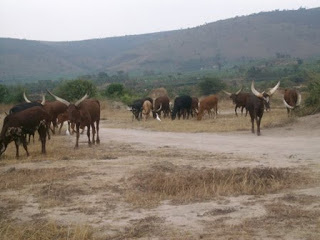
This is in response to the devastating El-Niño-induced drought which has affected an estimated 40 million people across the SADC region and, out of this figure, more than 23 million are in urgent need of humanitarian assistance.
The event is scheduled to take place at Gaborone International Convention Centre (GICC), Botswana on Tuesday 26th July 2016.
The Appeal is a formal request to the International Community to provide assistance to affected member states, and it is meant to complement the response efforts at individual member states level, as a lot has been done by the countries.
Five member states – Lesotho, Malawi, Namibia, Swaziland and Zimbabwe – have declared national drought emergencies.
South Africa has declared a drought emergency in eight of the country’s nine provinces, while Mozambique declared a 90-day institutional red alert for some southern and central areas.
Worry as River Blindness breaks out afresh in Kaduna communities
Anxiety pervades some local communities in Kaduna State, Northwest part of Nigeria, following the reported outbreak of River Blindness, an eye and skin infection that results in blindness.
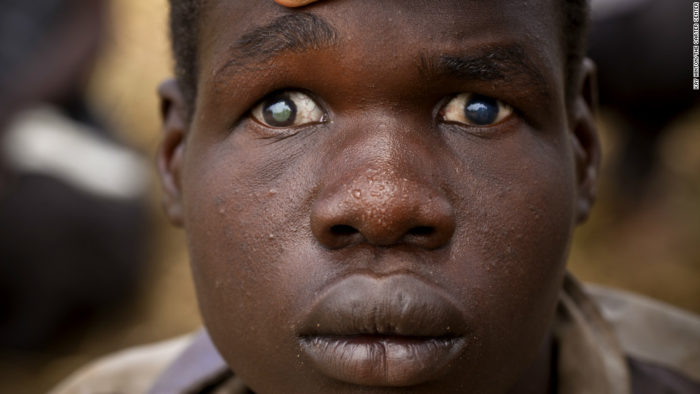
River Blindness is a disease caused by infection with the parasitic worm Onchocerca volvulus. Symptoms include severe itching, bumps under the skin, and blindness. It is the second most common cause of blindness due to infection, after trachoma.
Facts gathered at the Department of Health, Kajuru Local Government Area (LGA) secretariat, indicates that 14 districts are affected by the disease in the LGA alone.
Reports from the areas showed that many people within the affected communities have already gone blind while hundreds are suffering from eye infections that may lead to blindness.
The affected districts are Maro ward 1 district Maro District, Idon ward – 2 districts Idon and Iri districts, Tantatu ward – 1 district Tantatu. Afogoh ward – 1 Afogoh district, Kufana ward – 2 Kufana and Angwan Aku districts.
Others are Rimau ward – 1 Rimau district, Kalla ward – 1 Kalla district, Kajuru ward – 4 districts, Kyamara, Dawaki, Buda and districts, Kasuwan Magani ward – 1 Dustsen Gaiya district, Others include Ungwan Makama village in Robo and Angwan Fada and Angwan Aku in Fadama kuroro districts.
All these districts are within Iri Districts axis which is one of the areas with high prevalent cases of River Blindness in the local government.
This discovery followed a month of investigation carried out by a team of five investigative journalists including our correspondent in the villages affected.
The team discovered that River Iri, which served as a source of water to the communities within Iri Station and Makoro districts, was said to be the breeding place for tsetse flies which caused River Blindness within Iri village.
According to findings, the villagers got bitten by tsetse flies whenever they go to the river to fetch water and the flies carried a warm that caused blindness to those bitten.
Lack of access to clean water has always been the problem of the communities around Iri with population of over 100.
Findings further showed that villagers using water from River Iri are from Hayin Sarki, Sabon Gida, Inkirmi, Karmai, Makoro and Gadan Malam Mamman, among others.
People of Hayin Sarki, a village across River Iri Bridge built by the World Bank, still fetch water from the river known for spreading the tsetse flies despite the risk involved.
The villagers claimed they have no access to clean water so they still go to the river to fetch water while leaders within the community expressed fear because the flies still breed around the riverside.
An elderly woman and mother of two children, Yawo Yuguda, explained how she got blind several years ago.
“I got blind years back and till date nobody has told me the reason for my blindness. I even went to Kafanchan Hospital for treatment but they couldn’t explain to me the main reason for the blindness. So I have taken it as my destiny,” she said.
Alisabaltu Zankwa is another blind woman within Iri village who said she got blind 30 years ago. “Well, when people started going blind in the village nobody came to explain the reason behind it, we were only left to go looking for help. Mine started like a joke with itching before I later lost my sight completely,” she said.
Sixty-year-old Abdulmumini Ali said his eye problem started three years ago. “I started having this eye problem three years ago. It started with itching, sometimes I feel as if I’m being bitten inside.
“My elder brother has already lost his sight and the problem is the same. It all started last three years ago. We know something was wrong in the village but we don’t know what it is,” he said.
Village Head of Hausa Community in the village, 65-year-old Malam Garba, has lost complete sight of his left eye.
“I can’t see with my left eye as I talk to you now and this problem just started last year. I don’t know the cause but it began with itching. Now, the right eye too is having problem which is making me worried because it seems soon I will lose my sight completely.
“The last time I could remember some people came and fumigated River Iri was in the 1970s. Because they said the problem was the river. We were told that there were tsetse flies in the riverside,” he said.
Paul Sanda, a retired soldier, said he returned to the village with his family three years ago and soon started losing his sight.
“When I was in the city my eyes were fine but since I returned home after my retirement my eyes started having problems. That was in 2003. I visited the National Eye Centre where I was operated upon but I’m still not seeing clearly,” he said.
Eighty-year-old Doma Obandoma said he lost his sight completely in 2012. “The problem is some of us don’t go to hospital because we are poor and we don’t know the real cause of the blindness in the community but people said it’s has to do with the river. We just need help,” he said.
Sixty-five-year-old Alex Danladi said hers began as a pain and it started five years ago. “It began with itching before I went to the hospital once and they gave me drugs, but still the pains and itching continued. My daughter too who is 18 years old started complaining about same eye itching last year.
“The truth is before we moved from city to village we never had this symptom. So, we are all worried because we don’t know the cause,” she said.
District Head of Iri, Peter Magaji, expressed worry over the re-emergence of the flies in the area.
“Well, your visit made us to realise the gravity of the issue. My people came out in their numbers to explain that they are going blind and we suspect River Iri.
“The river was fumigated years back which helped kill the flies but now I heard that the flies are resurfacing which means something urgent needs to be done.
“We are appealing to government to help provide us with boreholes in Iri Station District because River Iri is the only source of water for this village and those around us. The river sometimes gets dried up but people still go there to dig in search of water.
“I’m afraid that people from Hayin Sarki and neighbouring villages still fetch water from the dried river despite the risk involved. I think if the local government can provide us with a borehole and it will go a long way in addressing the water problem,” he said.
The district head also appealed to government for a frequent fumigation of the river to control the flies.
The team also discovered that government needs to wake up to its responsibility in terms of provision of health care service delivery in the state because it appears that it is only Sight Saver, an NGO, that is providing medical attention to victims of River Blindness in the state.
According to budget document of Kaduna State, Sight Savers spends over N11 million annually for provision of the drug Mectizan and other services in the state.
According to observers, if the NGO decides to withdraw it intervention the situation will be disastrous for the villagers and the state.
Programme Officer of Neglected Tropical Diseases (NTD) at the Health Department of Kajuru LGA, Francis Habakuk, said they received a delegation last November of some visitors from the United States in collaboration with the NPHCDA in Abuja.
He listed communities visited by the team to include Rafin Kunu and Angwan Fada all under Kajuru but Iri was excluded. The delegation was led by the NTD coordinator in Kaduna State.
“We ask thecCommunity members to report cases of River Blindness to us, but they don’t report to us. They just sit at home.
“Since I assume office in the last five years, it’s only old cases of River Blindness that we have on record, except for the one new case M&E reported in Agwala in Afogoh District, Afogoh,” he said.
It’s now obvious that hundreds are going blind in the area. Why? Because the communities seem to be neglected, and there is a gap that needs to be filled urgent by the government on one hand (by taking action to remedy the situation), and the local people on the other (by reporting cases of River Blindness and promptly seeking medical attention).
By Mohammad Ibrahim
Agency describes act as safety valve for modern biotech
The National Biosafety Management Agency (NBMA) has described the 2015 Act that established it as a safety valve for the adoption of modern biotechnology in Nigeria.
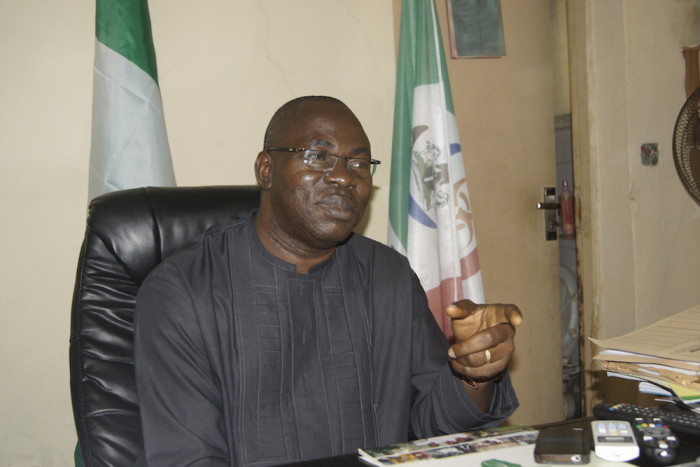
A statement issued on Friday in Abuja by the Director-General of the Agency, Dr. Rufus Ebegba, countered that the recent call by a group for the repeal of the Act was not only frivolous but also unpatriotic.
“The request is a call for the opening of the floodgate thus subjecting Nigeria to unrestricted importation and production of unregulated modern biotechnology products. It is also intended to render the more than twenty indigenous research institutes, universities, agencies and private concerns that have competence in this sector stagnated and redundant, in a global sphere that is fast moving towards safe modern biotechnological advancement,” Ebegba retorted.
Maintaining that the processes that led to the actualisation of the Act predated 2002, and spanned over 14 years to get to its final state of enactment in 2015, the DG further explained that the then Draft Biosafety Bill was subjected to various stakeholders’ review of the six geographical zones of Nigeria, and passed by the Sixth and Seventh National Assemblies, respectively.
While chiding the group’s call and describing it as a call for lawlessness in the administration of modern biotechnology, for which the consequences could be deleterious, Ebegba called for constructive criticism instead of malicious propaganda with a view to improving Nigeria.
“It is important to understand Biosafety as regulation of modern biotechnology and Genetically Modified Organisms (GMOs) and not to mix up unrelated issues,” he added.
Hinting that the Biosafety Act was adjudged by international safety communities as one of the best in Africa after having passed through rigorous processes that lasted more than 14 years, the DG emphasised that “it is indeed ridiculous to assert that the Act is not in accordance with the precautionary principles when it is a major legal precautionary instrument in the National Biosafety regulatory system. Therefore, the group’s call for the repeal of an Act that passed through the stringent legislative processes is a discredit to the Nigerian legislature and legal systems.”
He advised that if any individual or group strongly feels that a gap exists in the Act, which is a living and dynamic document, such a person or group should be more patriotic to point out the parts or sections for amendment rather than suggesting a legal lacuna that would call for anarchy in the modern biotechnology sector.
Further stressing that the Federal Government had meticulously put a holistic biosafety system that was in the best interest of everyone in place, the DG noted: “The NBMA is poised to ensure that only healthy and environmental friendly modern biotechnology products are imported or produced in Nigeria.”
He therefore advised that “Nigerians should trust and cooperate with the Agency in its efforts to effectively regulate a technology that would assist the Federal Government in her diversification policy.”
By Abdallah el-Kurebe
Assessing role of post-Paris Agreement NAMAs
The 2016 mid-year update of the NAMA Status Report, published by Ecofys and ECN under the Mitigation Momentum project, shows that NAMA development continues after Paris, while implementation still lags behind. NAMAs are important means to deliver on Nationally Determined Contribution (NDC) targets that countries have formulated as contributions to the Paris Agreement, but increased support is needed for capacity building and implementation, writes Michelle Bosquet and Charlotte Cuntz of Ecofys
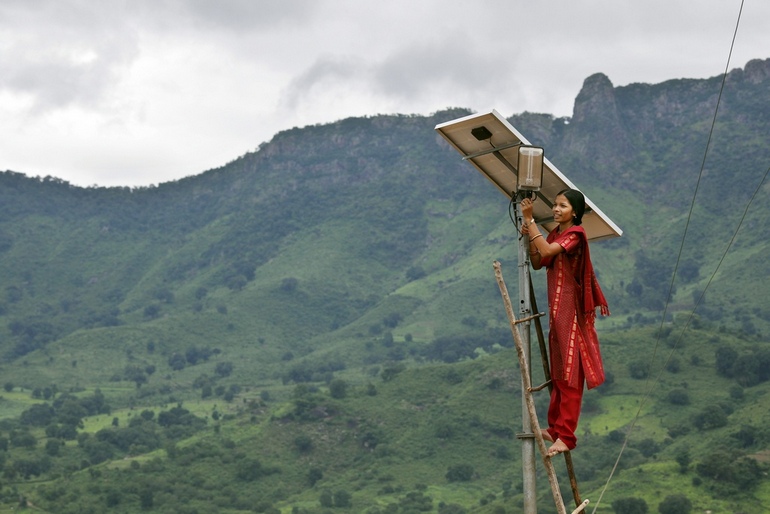
The Paris Agreement, adopted in December 2015, marks a historic breakthrough in international climate diplomacy: it is the first legally binding climate agreement in which all UNFCCC Parties – both developed and developing countries – committed to reducing greenhouse gas emissions through their NDCs. With this new dynamic in international climate politics, emission mitigation actions in developing countries are more than ever a focus of attention.
Nationally Appropriate Mitigation Actions (NAMAs) are mitigation actions that these countries have already developed under UNFCCC and for which a lot of political capital has been invested. The current NAMA Status Report therefore seeks to shine a light on what the Paris Agreement means for NAMAs by analysing the Agreement text and offering practical insights from the perspective of national government representatives.
What do the numbers say?
Developing countries continue to develop NAMA proposals, with an additional 10 registered in the NAMA database between October 2015 and April 2016. This increases the overall number of NAMAs to 178. Distribution of NAMAs across Africa, Asia and Latin America is becoming more even, whereas the energy sector continues to see the largest share of NAMA development. Implementation, however, remains limited: as of April 2016, only 16 NAMAs have secured financing for implementation.
What is the role of NAMAs in light of the Paris Agreement?
While the Paris Agreement does not explicitly mention NAMAs, it clearly requires that countries implement mitigation actions. It further emphasises the need for international climate finance, sustainable development and measurement, reporting and verification (MRV).
These are all important elements of NAMAs. As specific mitigation actions, they can play a role in three complementary ways: as one of the implementation vehicles for NDCs; as a means to channel international climate finance for mitigation; and to ensure transparency of mitigation actions. This is also reflected by the fact that out of 60 countries active in NAMA development, 40 have included explicit references to NAMAs as part of their NDCs. The high-level political commitments expressed within NDCs give greater purpose and a sense of urgency to NAMAs, which has in some cases been lacking in the NAMA development process.
What is the view of country representatives?
Country representatives from Colombia, Ethiopia, Indonesia and Thailand contributed to this Report with opinion pieces on how they view the role of NAMAs after the Paris Agreement.
All four representatives state that NAMA development will continue in their countries. While some don’t see their NAMA plans affected by the Paris Agreement, others perceive an increased need to enhance their NAMA activities to meet more ambitious national climate targets as formulated in their NDCs. However, some country representatives believe the Paris Agreement will create new challenges for NAMAs, with some specifically troubled that there is no clear signal as to how, or even whether NAMAs will be continued after 2020.
They agree that there are continuing needs to further support NAMAs, above all facilitated access to climate finance through guidance on funding criteria and more detailed feedback on dismissed funding proposals, as well as capacity building for MRV.

